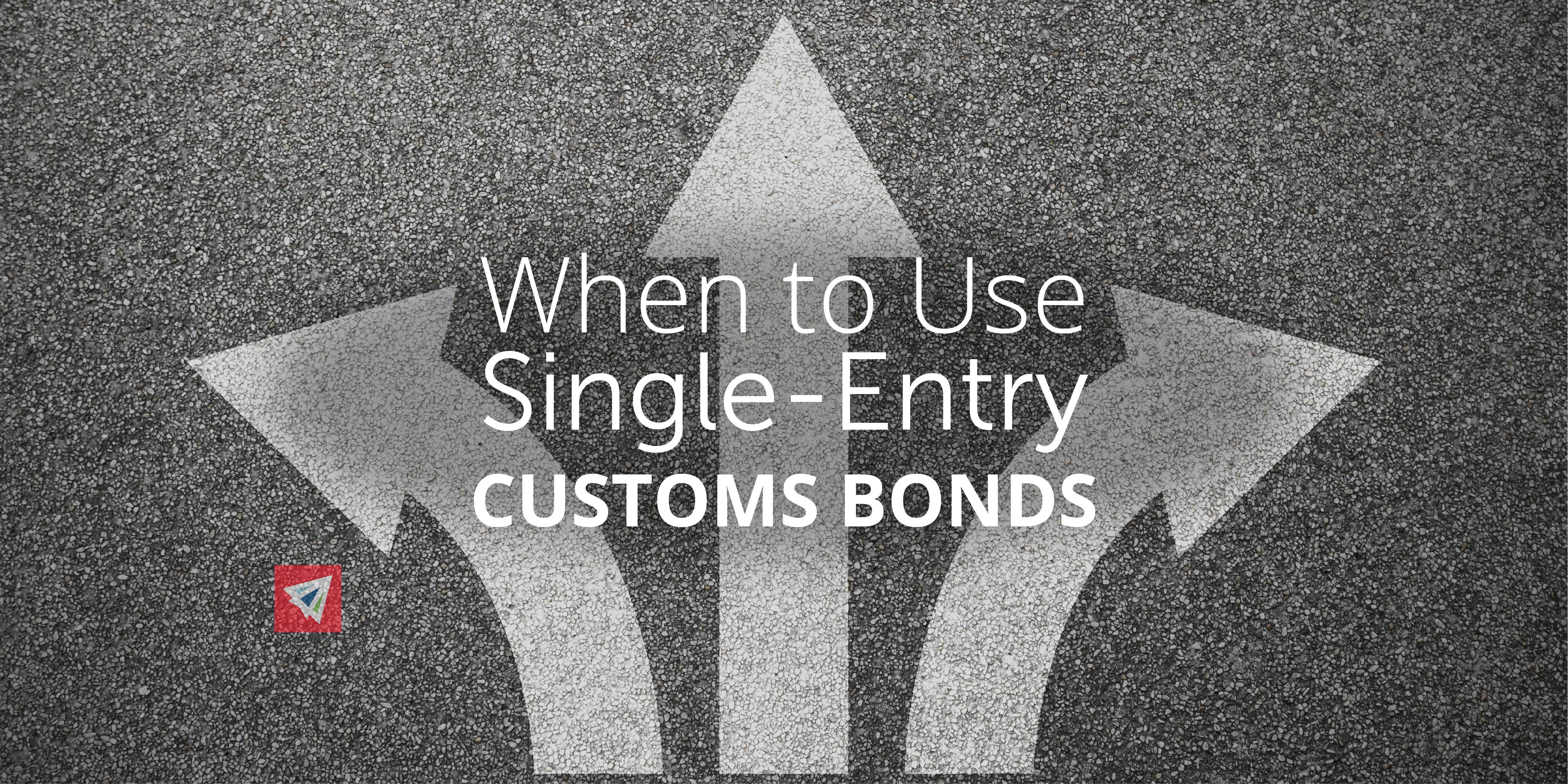Customs bonds are a requirement for any business importing to the United States. Any business or individual that plans on importing shipments in excess of a $2,500 commercial value is required by law to have one. But when it comes to purchasing customs bonds, customers are given a few choices. If you have read some of our past blogs on the topic, you know that there are two types of customs bonds: Single Entry Bonds (or Single Transaction Customs Bonds) and Continuous Customs Bonds. For those who are on the fence of which one to buy, here are our recommendations on when to use single entry customs bonds.
What a Single Entry Customs Bond Covers
As the name implies, a Single Entry Customs Bond is valid for one shipment. A better, more accurate way to put it is that a Single Entry Customs Bond covers one Bill Of Lading and the contents listed on it. So for an LCL shipment, all shippers with freight on the container need their own Single-Entry Customs Bond to cover their goods.
When to Use a Single Entry Customs Bond
As previously stated, these customs bonds are only good for one shipment. Any shipments in excess of that one will require an additional customs bond. Thus, companies who ship more than one time will need to purchase multiple single entry, or single-transaction customs bonds.
The question for most shippers when it comes to customs bonds is where the tipping point between single-entry and continuous bonds is. A continuous customs bond, or annual customs bond, covers all international imports within the one year after the purchase date of the continuous bond. Thus, for companies who ship very frequently, obtaining a continuous customs bond is much less of a hassle. Keep in mind to understand the bond renewal process for annual customs bonds, so you can eliminate the chance of delays or fines that could occur with your shipments.
Cost Difference Between Single Entry and Continuous Customs Bonds
We have touched on this topic in other articles, but there are major price differences between single transaction and annual customs bonds. As you might expect, single entry customs bonds get expensive when shippers are moving tons of containers on an annual basis. As a general rule of thumb, here are some pricing metrics:
Single-Entry Customs Bonds: Most single-transaction customs bonds will be priced between 0.5% to 2% of the commercial value of your goods. This fluctuates depending on many factors. Factors such as liability, risk of transport, goods, COG (country of origin), and other factors can contribute to higher or lower pricing structures.
Continuous Customs Bonds: Annual customs bond prices will vary depending on a few factors as mentioned below. They can start as low as $500 and go up from there depending on, once again, the liability, risk, goods, hazardous characteristics, and other factors.
When to Use Single-Entry Bonds
Plain and simple – until they exceed the cost of an annual customs bond. There are no specific benefits or risks associated with using one type of bond over another beyond price. If your company is expecting to be shipping a fair amount over the year, talk with your freight forwarder about how much you may have to spend on customs bond within the fiscal year.
To be prepared for such a conversation, add up the highest and lowest potential commercial value of the goods you will be shipping, as well as the most and least number of containers you believe you will be shipping within the year (since these two factors largely dictate the price of a customs bond.) With these data points, your forwarder should be able to give you an insight into which customs bond will provide you with better savings.
Conclusion
If you need help selecting a customs bond, or just want to learn about the differences between single entry and continuous customs bonds, browse our blog and give us a call. We are happy to help people get a better understanding of the topic, as well as provide them with an easy and quick way of attaining one.
